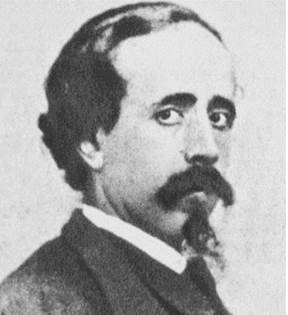Valeriano Bécquer facts for kids
Valeriano Domínguez Bécquer (born December 15, 1833 – died September 23, 1870) was a talented Spanish painter and artist. He was known for his paintings that showed everyday life and customs, a style called costumbrismo. He was also the older brother of the famous poet Gustavo Adolfo Bécquer.
Biography
Early Life and Art
Valeriano was born in Seville, Spain. His father, José Domínguez Bécquer, was also a painter. Valeriano was only eight years old when his father passed away. After that, his mother's family raised him. He learned art from his uncle, Joaquín Domínguez Bécquer, and helped him in his art studio until 1853. Later, he also studied with another artist named Antonio Cabral Bejarano.
Moving to Madrid and New Work
In 1862, Valeriano moved to Madrid to be with his brother Gustavo. In 1865, the Spanish government asked him to paint scenes of festivals, traditional clothes, and customs from different parts of Spain. This project meant he traveled for several years. However, this work was not finished because a big political change, known as the Glorious Revolution, caused the government to stop funding his project.
To earn money, Valeriano also worked as a cartoonist and illustrator for magazines. These included La Ilustración Española y Americana and El Museo Universal. He often worked on these projects with his brother Gustavo.
Later Life and Legacy
Valeriano died in Madrid at the age of 36 from liver disease. This happened just three months before his brother Gustavo passed away. Gustavo's health was always delicate, and his brother's death made him very sad, which might have made his own health worse.
Valeriano's portrait of his brother Gustavo was used on the 100 Peseta Spanish banknote from 1965 to 1970. This portrait also inspired a memorial statue in Maria Luisa Park in Seville.
See also
 In Spanish: Valeriano Domínguez Bécquer para niños
In Spanish: Valeriano Domínguez Bécquer para niños



